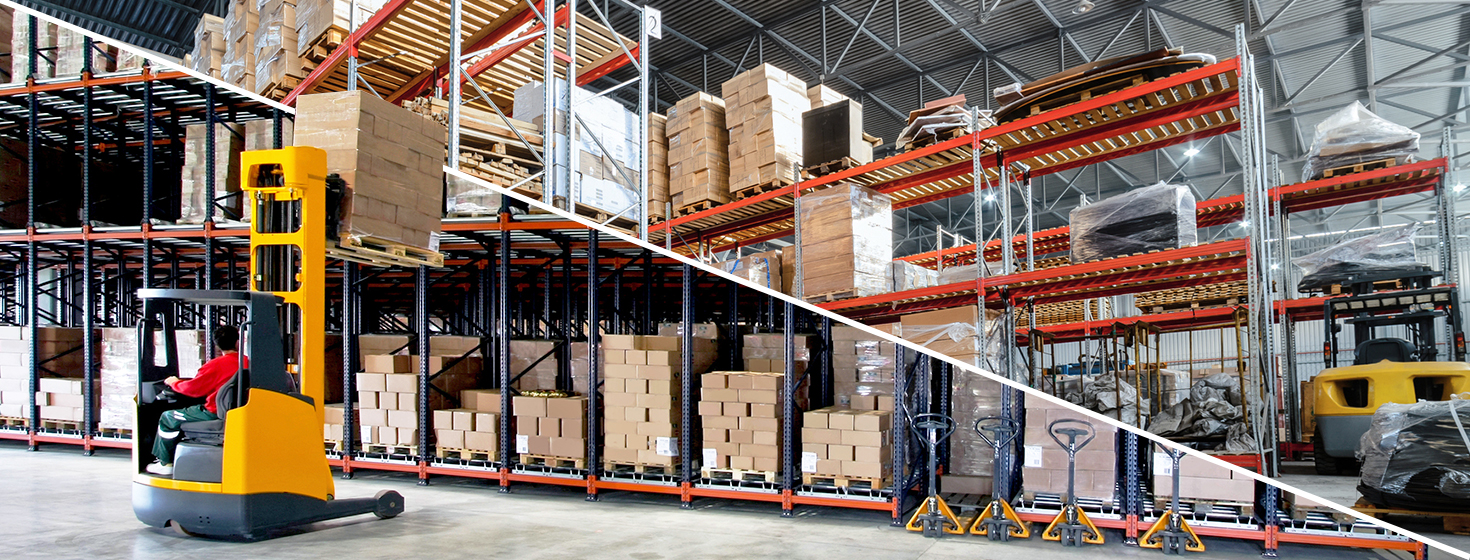What Is an Omnichannel Warehouse?
An omnichannel warehouse is different from a traditional warehouse in that it handles incoming orders from online, brick-and-mortar, and all other possible channels.
Let’s take a closer look at omnichannel warehouses, why they’re necessary, and how they impact warehouse management and operations.
The Problem: Single Ecommerce Warehouses Cannot Handle All Orders
Part of the reason warehouses continue operating as traditional, single-channel warehouses, lies in the lackluster use of warehouse management technology.
In omnichannel supply chains, orders come in from all directions, including in-store orders, replenishment for existing stores, ecommerce orders, and even the occasional customer service-assisted orders.
In the age of Amazon, handling all e-commerce orders in a single warehouse is impractical, and it will result in lost opportunities.
Streamlining returns is an integral part of developing an omnichannel warehouse, and, with up to 30% of all e-commerce purchases returned, reports Business2Community, warehouse managers must include returns capabilities in existing warehouses.
This reduces logistics spending, but in standard warehouses, this also implies a 30% increase in workload without a corresponding increase in revenue.
Therefore, an omnichannel warehouse is the only solution.
The Solution: Converting All Warehouses to Omnichannel Warehouses Is Key
Staying competitive with Amazon is already difficult, as Amazon has an advanced, dedicated plethora of systems that speed order processing, picking and pulling, packing, and shipping.
Even though the company brick-and-mortar shopping centers are in infancy, simply being able to receive items at an Amazon pickup location makes Amazon a go-to preference for millions of customers.
Amazon’s abilities lie in its dedication to developing technologies and processes that expand shipping options while moving product faster.
According to Datex, operating an omnichannel warehouse requires, at a minimum, an integrated warehouse management system, an order management system, a package optimization system, and a variable shipping rate shopping tool, such as a dedicated transportation management system.
Warehouse managers should begin the process by converting all existing warehouse and distribution centers into omnichannel warehouses.
Furthermore, storefronts can be used as an additional means of order fulfillment, taking advantage of shelf products to reduce the distance between customers and order fulfillment centers.
The Reward: Operating Multiple Omnichannel Warehouses Offers Key Advantages
Companies have multiple warehouses in operation, and even storefronts can be used as mini-warehouses for the purposes of fulfilling more orders.
Additional advantages of embracing an enterprise-wide adoption of omnichannel warehouses include:
- Reduced delivery times, enabling competition with Amazon and Walmart, which are offering free, two-day, next-day or even same-day shipping options on certain purchases.
- Better collaboration between stores, e-commerce and order fulfillment.
- Expanded shipping options, such as click and collect delivery options, as explained by Olivia Riant of Generix Group.
- Greater variety of products, offering to customers more options and requiring greater attention to detail in warehouse management.
- Improved order accuracy through integration, improving perfect order percentages and boosting brand value.
Move Toward Omnichannel Warehouses to Stay Competitive
The days of an ecommerce-dedicated warehouse are over. Warehouse managers must understand the necessity of new systems and processes to create omnichannel warehouses, with the added benefits listed above.
About the Author
Jason Rosing is the founding partner of Veridian; a valued Manhattan Associates partner and technology leader specializing in user-friendly, robust and flexible automated testing and configuration management solutions designed to meet the ever-changing challenges of the omnichannel landscape.
Related: 9 Attributes Redefining the Warehouse of the Future
Related White Paper
How Shippers Can Compete in an Ecommerce Logistics Driven Shipping Environment
Understanding ecommerce shipping and logistics are essential to success in the modern era, this white paper details what it takes for shippers in all surface modes to compete and succeed in today's ecommerce logistics driven shipping environment. Download Now!
Top Supply Chain Trends that Will Impact Supply Chain Management in 2018
In this white paper, we discuss the non-technological trends supply chain managers must know and then will hone in on the technologies that will impact the supply chain in 2018. Download Now!
Article topics
Email Sign Up




















